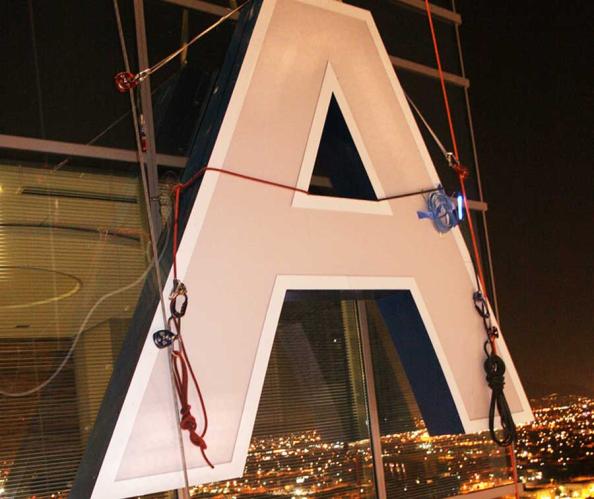The 2021 Economic Forum Zeroes in on Post-Pandemic Recovery
There’s good news on the economic horizon after a long year that has seen every industry impacted by the effects of the global pandemic.
That’s the message according to two highly sought-after business leaders who shared their local, regional and national insights on the past 12 months during Alliance Bank of Arizona’s 2021 Virtual Economic Forum.
The presentation featured keynote speaker Dr. Christopher Thornberg, founder of Beacon Economics, a leading independent economic research and consulting firm, as well as Chris Camacho, president and CEO of the Greater Phoenix Economic Council. The two joined forces to give participants in-depth analysis of how the past year has affected the economy, as well as provide an outlook on what Arizonans can expect in the short- and long-term.
Camacho opened the discussion by sharing Greater Phoenix’s unique position among major metropolitan areas. Specifically, despite one of the sharpest nationwide economic contractions, Phoenix had the third-lowest GDP contraction, which he attributed to successful intentional policy behaviors since the great recession. According to Camacho, Phoenix entered COVID in a much better position than many cities, and its recovery has fared well.
In fact, GPEC is projecting a 112% increase in business development in 2021, with nearly 300 active prospects bringing with them $24.5 billion in capital investment potential and nearly 30,000 jobs. The year is off to a good start with 21 companies relocating to date this year, $509.6 million in capital investments and nearly 5,000 new jobs created with an average high wage salary of more than $76,000.
In addition to the influx of California-based businesses choosing to move to Arizona, Camacho focused on other notable trends influenced by COVID-19, including:
- Fortune 500 companies’ top-of-mind emphasis on diversity, equity and inclusion
- The healthcare industry’s responsiveness and pivoting during the pandemic
- A growing appetite for renewables and sustainability from manufacturers
- Commercial real estate trends being driven by tech
- A surge of retail sales moving online and driving the need for warehousing and distribution facilities
Complementing the hyper-local analysis, Dr. Thornberg attempted to answer the question most on participants minds – How long is the road to recovery? – by providing thoughtful, macro-level insights that provided greater context on how Arizona is faring against other states and the nation. To gauge progress to date, he examined the pandemic business cycle, which has included a 70% recovery in economic activity since the recession ended in April 2020, and pointed to the potential for a post-COVID economic surge.
In his opinion, Dr. Thornberg foresees strong growth through the end of 2021, with the fourth quarter of 2021 and first quarter of 2022 ushering in the age of the “new roaring 20s.”
Dr. Thornberg also delved into the key issues that will affect the remainder of the recovery, including the speed of vaccination rollout, federal policy decisions and stimulus, which could be cause for inflationary concern, as well as emerging commercial real estate trends driven by the vast number of employees who continue to work from home.
In looking through the Arizona lens, Dr. Thornberg put a critical eye to the economic indicators and trends that will continue to shape the state’s future recovery and growth. Among them, he reported that:
- There has been a significant economic bounce-back in retail, specifically sporting, hobby and hardware, motor vehicle and home goods. Conversely, the state's hospitality sector, including food and beverage, continues to struggle, but is expected to ramp up as growing numbers of residents and visitors are vaccinated.
- The state's residential housing market continued to surge, reflecting a significant shift in the market to individuals and families pursuing owned properties vs. rentals. Despite low inventory, home prices soared 13.8% in the last year compared to the 6.1% growth over the previous five years, while the rental markets continue to look strong.
- The mass exodus of businesses and residents from California helped Arizona's seize the #5 position for most economic growth in the nation; California ranked 44th.
- The biggest lagging indicator - employment - also reflects positive change. While national numbers still indicate slow progress in recovering jobs, especially those that are low-skilled positions, Arizona holds its own. The state's post-pandemic employment rate is the best in the nation, with jobs down only 2.3%. The decline mostly represents jobs tied to tourism.
- The forecast for small business is strong in the state. Despite 30% of small businesses closing during the pandemic, business applications are up 17.2% to date in 2021 with optimistic entrepreneurs looking for fresh ways to appeal to the market.
To hear first-hand the insights and thoughtful analysis from Chris Camacho and Dr. Chris Thornberg, a full recording of Alliance Bank of Arizona’s virtual Economic Forum is available by clicking here.
Alliance Bank of Arizona
Alliance Bank of Arizona, a division of Western Alliance Bank, Member FDIC, delivers relationship banking that puts clients at the center of everything. Founded in 2003, Alliance Bank of Arizona offers a full spectrum of tailored commercial banking solutions delivered with outstanding service. With offices in Greater Phoenix, Tucson and Flagstaff, Alliance Bank of Arizona is part of Western Alliance Bancorporation, the largest locally headquartered banking company in Arizona, with more than $80 billion in assets. Major accolades include being ranked as a top U.S. bank in 2024 by American Banker and Bank Director. As a regional bank with significant national capabilities, Alliance Bank of Arizona delivers the reach, resources and local market expertise that make a difference for customers.
